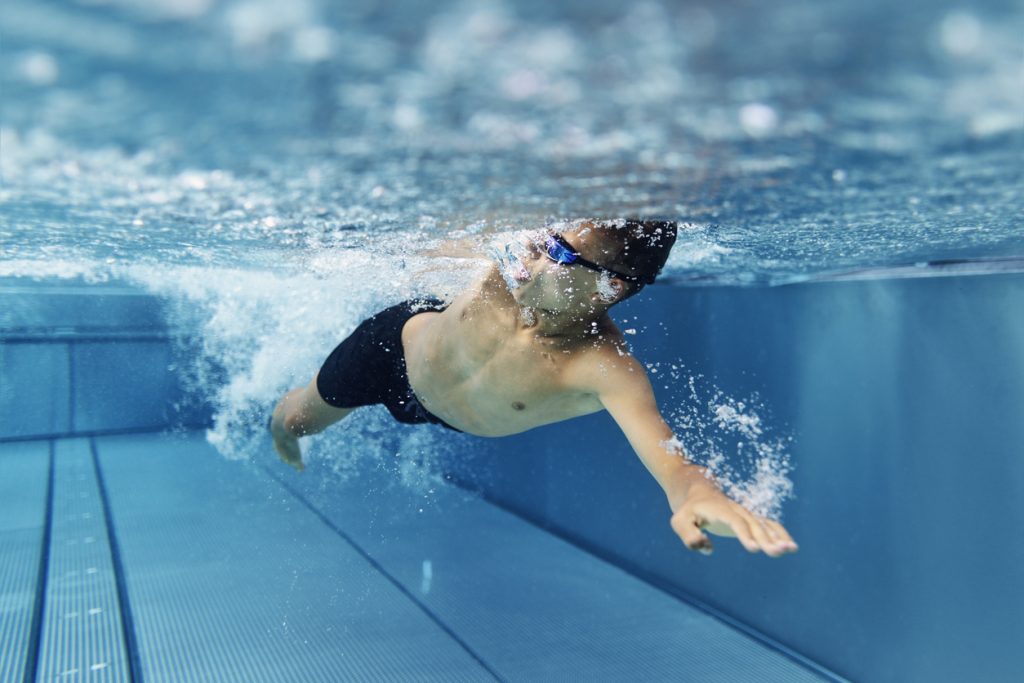Is Swimming a Contact Sport? Uncovering the Hidden Risks
Swimming is not considered a contact sport because it does not involve physical contact between opponents. Swimming is a popular recreational activity and competitive sport that focuses on speed and technique in the water.
It is a non-contact sport that requires swimmers to propel themselves through the water using rhythmic arm and leg movements. Unlike contact sports such as football or rugby, swimmers do not come into direct physical contact with their opponents. Instead, they compete against the clock and strive to achieve personal best times or outperform their competitors in races.
Swimming involves individual performances or team relays and is known for its health benefits and low impact on joints and muscles.
Hidden Dangers Of Physical Contact In The Pool
Swimming may seem like a non-contact sport, but there are hidden dangers in the pool. From collisions to the spread of infectious diseases, physical contact can pose risks that swimmers should be aware of. Stay safe by practicing good hygiene and being mindful of your surroundings.
Did you know that swimming, a popular recreational and competitive activity, may have hidden dangers related to physical contact in the pool? In this blog post, we will explore the overlooked hazards associated with swimming as a contact sport and how physical contact can impact swimmers’ safety.
So, let’s dive right in!
Hidden Risks Associated With Swimming As A Contact Sport:
- Spread of infections: In a crowded pool environment, contact between swimmers can increase the risk of spreading infections such as skin infections, ear infections, or conjunctivitis due to exposure to bacteria and viruses present in the water.
- Potential for collisions: While swimming competitively or even during recreational swimming, physical contact between swimmers can lead to accidental collisions. These collisions can cause injuries such as bruises, cuts, or even more severe injuries like concussions.
- Dangerous underwater encounters: Physical contact underwater, deliberately or accidentally, can be perilous. Swimmers may inadvertently come into contact with submerged objects or even other swimmers, which can result in injuries or pose a drowning risk if swimmers become entangled.
How Physical Contact Can Impact Swimmers’ Safety:
- Decrease in situational awareness: When swimmers are engaged in physical contact, their attention may be diverted from their surroundings, potentially causing them to miss hazards or other swimmers in their vicinity. This lack of situational awareness can increase the risk of accidents or collisions.
- Loss of balance and coordination: Physical contact in the pool, such as pushing or grabbing, can disrupt swimmers’ balance and coordination, leading to a loss of control over their swimming movements. This loss of control can result in accidents or injuries.
- Increased risk of fatigue: Engaging in physical contact can be physically demanding and can drain swimmers’ energy faster than usual. Fatigue can hinder their ability to swim efficiently, potentially leading to accidents or the inability to handle unexpected situations.
Overlooked Hazards In Swimming Competitions:
- Underwater tussles: During intense swimming competitions, physical contact underwater can occur while swimmers jostle for position. These underwater tussles may result in accidental injuries, and officials may not always notice or be able to intervene in time.
- Inadequate supervision: Swimming competitions often involve multiple swimmers in close proximity, making it challenging for supervisors to closely monitor every interaction. This lack of supervision can leave swimmers vulnerable to the risks associated with physical contact.
- Equipment-related hazards: Swimming competitions frequently involve the use of various equipment such as diving boards, starting blocks, or relay batons. Physical contact with these objects during races or relays can lead to injuries if not appropriately handled or maintained.
While swimming is not traditionally considered a contact sport, physical contact in the pool can pose hidden risks to swimmers’ safety. From the spread of infections to the potential for collisions, it is crucial to be aware of the dangers associated with physical contact in swimming.
Whether participating in swimming competitions or enjoying recreational swimming, swimmers and supervisors should prioritize safety and take necessary precautions to minimize these risks. Stay safe and enjoy your time in the pool!
Types Of Contact In Competitive Swimming
Competitive swimming involves a range of contact types, including unintentional physical contact, strategic blocking, and occasional touching in relay races. While swimming is not traditionally considered a contact sport like football or rugby, there is still some level of physical interaction in certain situations.
Swimming is an exhilarating sport that combines athleticism and grace in the water. But is it considered a contact sport? In this blog post, we will explore the various types of contact that can occur in competitive swimming, including unintentional physical contact during races, purposeful contact in water polo, and the risks of contact in synchronized swimming routines.
Let’s dive in!
Examining Unintentional Physical Contact During Races:
- Swimmers often find themselves in close proximity to one another during races, which can lead to unintentional physical contact.
- Contact can occur when swimmers accidentally collide or touch each other while swimming or making turns.
- Unintentional physical contact is common, especially in events like freestyle or butterfly where swimmers are in close quarters.
- The nature of these races and the speed at which swimmers are moving make it difficult to completely avoid contact.
Understanding Purposeful Contact In Water Polo:
- Water polo is a sport that involves contact between players, as it is part of the game’s strategy.
- Players are allowed to make contact with opponents in order to gain control of the ball or impede their progress.
- Contact in water polo can involve pushing, holding, or even underwater wrestling.
- The physicality of the sport adds an exciting and competitive element to the game.
Evaluating The Risks Of Contact In Synchronized Swimming Routines:
- Synchronized swimming routines are typically graceful and choreographed, but they do involve contact and physical interaction between swimmers.
- Swimmers may hold onto each other to create different formations or perform lifts and throws.
- While the contact in synchronized swimming is purposeful and planned, it still carries some risk of injury.
- Safety precautions are taken to ensure the well-being of the swimmers, such as proper training and synchronized movements.
These different types of contact in swimming demonstrate the complexity and versatility of the sport. From unintentional physical contact during races to purposeful contact in water polo and the delicate coordination of synchronized swimming routines, swimming encompasses a wide range of experiences.
Whether you prefer the speed and competition of races or the teamwork and strategy of water polo, there is something for everyone in the world of swimming. So grab your goggles and swim cap and dive into the exciting world of aquatic athleticism!
Common Injuries Caused By Contact In Swimming
Swimming is often considered a non-contact sport, but it can still lead to common injuries caused by accidental contact. These injuries may include shoulder impingement, ankle strains, or collisions resulting in head or facial injuries.
The Impact Of Collisions And Kicks On Head And Neck Injuries
- Forceful collisions and accidental kicks during swimming can result in head and neck injuries, which are more common than you might think. These injuries can occur during race starts, turns, or even regular training sessions. Here’s a closer look at the impact of such occurrences:
- Head injuries:
- Concussions: Severe collisions can lead to concussions, which are traumatic brain injuries causing a range of symptoms like headache, dizziness, and confusion. These injuries require immediate medical attention.
- Facial lacerations: Accidental kicks or collisions with walls can result in cuts and lacerations on the face, causing bleeding and potential scarring.
- Jaw fractures: Powerful impacts on the jaw can cause fractures, requiring medical intervention and potentially impacting a swimmer’s ability to compete.
- Neck injuries:
- Whiplash: The sudden and forceful movement of the neck due to collisions or kicks can result in whiplash, leading to pain, stiffness, and reduced mobility. Swimmers should seek medical advice if they suspect a neck injury.
- Cervical strain: Collisions can strain the neck muscles and ligaments, causing discomfort and potential muscle spasms. Rest and proper rehabilitation are essential for recovery.
Remember, head and neck injuries in swimming can range from mild to severe, so it’s crucial to take proper precautions and consult a medical professional when needed.
Strains And Sprains Resulting From Body Contact
- While swimming is often considered a non-contact sport, unintentional body contact can still occur, leading to strains and sprains. These injuries are more prevalent during crowded training sessions or competitions. Let’s explore:
- Shoulder strains: Forceful collisions or sudden movements can strain the muscles and tendons around the shoulder joint, causing pain and limited mobility. It’s important to rest and apply appropriate rehabilitation techniques to avoid long-term complications.
- Elbow sprains: Awkward arm movements during contact can result in sprains, causing pain and instability in the elbow joint. Rest, icing, and targeted exercises can aid recovery.
- Hip strains: Kicks or pushes from other swimmers can strain the muscles and tendons around the hip joint, leading to pain and discomfort. Careful stretching and strengthening exercises can help prevent these injuries.
Bear in mind that body contact in swimming is usually accidental, so being aware of other swimmers and maintaining proper technique can reduce the risk of strains and sprains.
Potential Long-Term Effects Of Repetitive Contact On Joints And Muscles
- While the impact of a single contact incident may not be significant, repetitive contact in swimming can have long-term effects on joints and muscles. Continuous strain on specific areas can result in chronic injuries. Let’s delve into these potential effects:
- Knee issues: High-intensity training sessions and repetitive contact can lead to knee problems like tendonitis, patellofemoral pain syndrome, or meniscus tears. Proper warm-ups, strengthening exercises, and rest are essential for maintaining knee health.
- Rotator cuff damage: Swimmers frequently use their shoulders for propulsion, making them susceptible to overuse injuries like rotator cuff tendinitis or tears. Regular rest and targeted exercises can help prevent long-term damage.
- Back pain: The repetitive nature of swimming, combined with body contact, can lead to back pain, especially in the lumbar region. Strengthening the core, maintaining proper technique, and avoiding excessive strain can contribute to a healthier back.
While swimming offers numerous health benefits, it’s crucial to be mindful of the potential long-term effects of repetitive contact on joints and muscles. Balance your training intensity, incorporate strength and conditioning exercises, and listen to your body to minimize the risk of chronic injuries.
Remember, taking proactive steps to prevent and address contact-related injuries is vital to maintaining a safe and enjoyable swimming experience.
Precautions And Safety Measures For Swimmers
Swimming, although a popular recreational activity, does not typically involve physical contact between swimmers. However, it is important for swimmers to take precautions and safety measures to avoid accidents or injuries in the pool.
Strategies For Minimizing Contact-Related Injuries In Swimming:
Swimming is a physically demanding sport that involves intense training and competitive matches. While it may not be considered a conventional contact sport like football or rugby, there is still a risk of injuries during swimming activities. To ensure the safety of swimmers, certain strategies can be employed to minimize contact-related injuries.
Here are some key precautions and safety measures to follow:
Proper warm-up and stretching routines: Engaging in a thorough warm-up session before swimming is essential to prepare the body for the physical exertion involved. It helps increase blood flow, loosens muscles, and reduces the risk of injuries. Incorporating stretching exercises specific to swimming can also enhance flexibility and prevent strain on muscles and joints.
Maintaining proper technique: One of the most effective ways to minimize contact-related injuries in swimming is to ensure swimmers maintain proper technique. Proper body alignment, efficient stroke mechanics, and correct breathing techniques can help reduce the chance of collisions or accidental contact with other swimmers.
Clear communication among swimmers:
Effective communication among swimmers is crucial to avoid colliding with one another in the pool. Swimmers should be aware of their surroundings and use hand signals or verbal cues to indicate their intended movements to other swimmers. This can help prevent accidental contact and ensure a safer swimming environment.
Implementing lane discipline: In swimming, lanes are used to separate swimmers. Adhering to lane discipline is vital to reduce the risk of contact-related injuries. Each swimmer should stick to their designated lane and maintain a consistent pace, allowing for smoother and safer movement in the pool.
Enforcement of rules by referees and coaches: Referees and coaches play a crucial role in ensuring a safe swimming environment. They need to enforce rules, monitor the pool for any potential safety hazards, and provide guidance to swimmers on maintaining appropriate conduct during training sessions and competitions. By overseeing the activities and intervening when necessary, referees and coaches can maintain a safe and controlled swimming environment.
Adhering to these strategies can significantly reduce the likelihood of contact-related injuries in swimming. By incorporating proper warm-up routines, focusing on technique, encouraging clear communication, implementing lane discipline, and having vigilant referees and coaches, swimmers can enjoy their sport while minimizing the risk of contact-related accidents or injuries.
Addressing The Cultural Perception Of Swimming As A Contact Sport
Swimming, often perceived as a non-contact activity, challenges cultural norms with its physicality. Its close proximity and occasional collisions make it deserving of a second thought as a contact sport. Look beyond the surface to understand its complexities.
Swimming is often perceived as a peaceful and non-contact activity, but is this perception accurate? In this blog post, we will address the cultural misconception surrounding swimming as a contact sport. By examining the historical context, reasons behind the belief, and the need to recognize swimming as a contact sport, we hope to shed light on this topic and challenge traditional assumptions.
Changing The Misconception Of Swimming As A Non-Contact Activity
- Many people believe that swimming is a non-contact sport, but there are several reasons why this perception needs to be challenged:
- Swimming involves physical interaction between athletes, especially during competitive races.
- Certain swimming strokes, such as the butterfly or breaststroke, require swimmers to make physical contact with one another.
- Training sessions and water polo games also involve contact between athletes.
Historical Context And Reasons Behind The Belief
- Traditional swimming events, such as the freestyle and backstroke, may give the impression of being non-contact due to their individual nature.
- Historically, swimming was perceived as a recreational or leisurely activity rather than a competitive sport, which contributed to the belief that it is non-contact.
- A lack of knowledge about different swimming strokes and events may have perpetuated the misconception that swimming is non-contact.
Highlighting The Need To Recognize Swimming As A Contact Sport
- By acknowledging swimming as a contact sport, we can improve safety measures and policies related to physical contact during swimming events.
- Recognizing swimming as a contact sport will enhance the understanding and appreciation of the skills required by swimmers to navigate crowded races and execute complex strokes.
- It is essential to educate both athletes and spectators about the physical demands and potential risks associated with swimming as a contact sport.
Swimming is not simply a tranquil activity enjoyed by individuals seeking solitude in the water. It is a physically demanding sport that requires athletes to navigate physical contact and incorporate strategies to gain a competitive edge. By dispelling the misconception that swimming is a non-contact activity, we can better appreciate the athleticism and competitive nature of this sport.
Balancing Thrills And Risks: Safety Guidelines For Swim Competitions
Swim competitions require a delicate balance between thrills and risks. While swimming is not typically considered a contact sport, safety guidelines must be followed to ensure the well-being of athletes and minimize any potential risks.
Swimming is a thrilling sport that offers a unique combination of competition, skill, and physical prowess. However, like any sport, swimming carries certain risks, especially when it comes to contact between swimmers. In this section, we will delve into the safety guidelines for swimming competitions, exploring the importance of implementing rules and regulations, the role of officials in enforcing those rules, and the significance of training and educating athletes on the risks and safety measures associated with swimming competitions.
Implementing Rules And Regulations To Govern Contact:
- The primary objective of implementing rules and regulations is to ensure the safety of swimmers during competitions.
- Rules are established to define permissible and prohibited contact between swimmers.
- By strictly enforcing these rules, swim competitions can minimize the occurrence of dangerous situations and prevent injuries.
- Rules governing contact may include guidelines on kicking, arm movement, overtaking, and turns, among other aspects.
- The implementation of these rules serves as a crucial foundation for maintaining a safe swimming environment.
Role Of Officials In Enforcing Rules And Preventing Dangerous Situations:
- Officials play a vital role in swim competitions by enforcing the established rules and regulations.
- They closely monitor the swimmers’ actions during races to ensure compliance with the rules and promptly address any violations.
- Officials have the authority to penalize swimmers who engage in dangerous or prohibited contact.
- By actively enforcing the rules, officials not only maintain the integrity of the competition but also safeguard the well-being of the participants.
- Their presence and vigilance contribute significantly to the prevention of potentially hazardous incidents.
Training And Educating Athletes On The Risks And Safety Measures:
- Training and education play a crucial role in creating awareness among swimmers about the risks associated with contact during competitions.
- Athletes are trained to understand the importance of following the established rules and regulations.
- They learn about the potential dangers of improper contact, such as collisions or interference with other swimmers.
- Safety measures, such as maintaining a safe distance from other swimmers, are taught to minimize the risk of accidents.
- By providing comprehensive training and education, athletes are equipped with the knowledge and skills necessary to prioritize their safety and the safety of others in the pool.
By implementing and enforcing rules, as well as providing thorough training on safety measures, swimming competitions can strike a balance between thrills and risks. Swimmers can indulge in the exhilaration of the sport while being assured of their safety and well-being.
So, dive into the water with confidence, knowing that swimming is more than just a contact sport – it’s a sport that values safety above all else.
Conclusion: Promoting Safe And Enjoyable Swimming Experiences
Swimming offers both safe and enjoyable experiences, despite not being considered a contact sport. With proper supervision and adherence to safety guidelines, individuals can participate in swimming activities without the risk of physical contact. So dive in and embrace the water without worrying about contact sports.
Is Swimming A Contact Sport?
Swimming is a popular activity enjoyed by people of all ages. It provides numerous health benefits and is a great way to stay fit. But is swimming a contact sport? Let’s delve into the topic and find out.
Encouraging Awareness Of The Hidden Risks In Swimming As A Contact Sport:
- Water-related injuries can still occur in swimming, despite it not being a contact sport in the traditional sense.
- Drowning is a major concern, especially when proper supervision and precautionary measures are lacking.
- Swimmers should be aware of the risks associated with colliding with pool walls, diving boards, or other swimmers.
Emphasizing The Importance Of Safety Precautions For Swimmers:
- Adhering to rules and regulations set by swimming organizations ensures the safety of swimmers.
- Wearing appropriate swim gear, such as goggles and swim caps, can protect against injuries and enhance performance.
- Learning and practicing swimming techniques, including proper breathing and stroke execution, reduces the risk of accidents.
Striving For A Balance Between Competition And Participant Well-Being:
- It is crucial to prioritize the well-being of swimmers and ensure their safety throughout both training and competitions.
- Promoting a positive and supportive environment fosters enjoyment and enhances the overall swimming experience.
- Warm-up exercises and stretching routines can help prevent muscle strain and reduce the likelihood of injuries.
Swimming, although not considered a contact sport in the typical sense, still poses potential risks and requires the implementation of safety measures. By encouraging awareness of these hidden risks, emphasizing the importance of safety precautions, and striving for a balance between competition and participant well-being, we can promote safe and enjoyable swimming experiences for all.
So dive in, have fun, and make sure to prioritize safety in the water!

Frequently Asked Questions Of Is Swimming A Contact Sport
Is Swimming A Contact Sport?
Swimming is not typically considered a contact sport because there is no intentional physical contact between athletes.
Can Swimming Cause Injuries?
While swimming is generally a low-impact sport, injuries can occur due to repetitive motions or accidents in the pool.
What Are The Benefits Of Swimming?
Swimming offers numerous benefits such as improved cardiovascular health, muscle toning, weight loss, and enhanced flexibility.
Conclusion
Swimming may not be considered a traditional contact sport like football or rugby, but it certainly involves physical contact to some extent. As we have explored in this blog post, swimming requires athletes to navigate in close proximity to each other in crowded lanes, which can lead to inadvertent collisions or contact.
Moreover, during competitive swimming events, swimmers may inadvertently touch or make contact with each other during turns or when jostling for position. Despite the absence of deliberate physical confrontation, physical contact in swimming can result in injuries, such as scratches, bruises, or even concussions.
Coaches and officials must implement proper safety measures and regulations to mitigate these risks and protect athletes from harm. So, while swimming may not fall into the conventional category of contact sports, it is undeniable that physical contact is inherent in the sport.




Hi,
I intend to contribute a guest post to your website that will help you get good traffic as well as interest your readers.
Shall I send you the topics then?
Best,
Alvina Miller